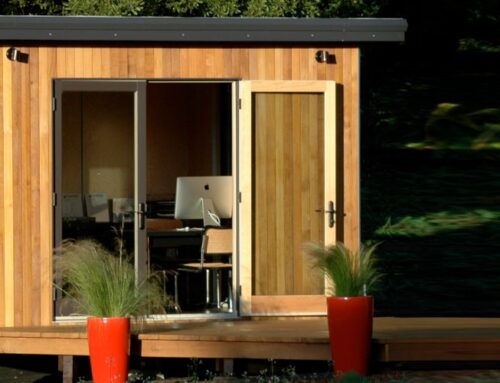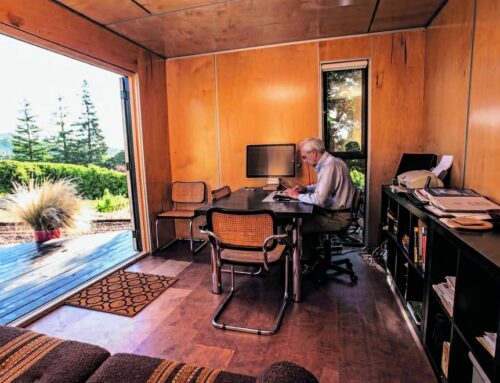From the article at https://srcity.org/2280/Accessory-Dwelling-Units
Zoning Code Revisions
On December 12, 2017, the City Council adopted Ordinance No. ORD-2017-024, amending the Accessory Dwelling Unit (ADU) section of the Santa Rosa Zoning Code in compliance with State law and in support of the City’s Housing Action Plan.
The final version of the ADU ordinance can be found here.
Fee Reductions
As part of the ADU ordinance adoption, the City Council also adopted two resolutions reducing the following fees:
- Capital Facilities fees
- Parks fees
- Southeast Area Development Impact fees
- Southwest Area Development Impact fees:
|
Unit Size (Square Feet) |
Percentage of Impact Fees Assessed (the % of the fee to be paid by the applicant) |
|
|
Larger Than |
Up To |
|
|
Internal Conversion |
0% |
|
|
– |
750 |
0% |
|
751 |
950 |
25% |
|
951 |
1,200 |
50% |
Frequently Asked Questions
The following are answers to frequently asked questions related to Accessory Dwelling Units (ADU) and Junior Accessory Dwelling Units (JADU):
What is an ADU?
An Accessory Dwelling Unit (ADU) is an attached or detached residential dwelling, located on the same parcel as an existing single-family dwelling, that provides complete independent living facilities, including sleeping, cooking, bathing, and sanitation. An ADU can be located on any property where the zoning district allows single-family residential by right, and on any parcel that already contains only one single-family residence.
What is a JADU?
A Junior ADU (or JADU) is a new category of dwelling unit created by the State of California and adopted by the City of Santa Rosa. There are several distinctions between a standard ADU and a JADU detailed in the table below. The main difference is that a JADU is not required to have a dedicated bathroom.
What are the building permit application submittal requirements?
The following are the materials required for submittal of a building permit for both an ADU and JADU:
- Site plan
- Floor plan
- Foundation plan
- Interior cross sections
- Construction details
- Elevations for new structures
- Photographs of site for new structures
- Materials and color board for new structures
- Deed Restriction or affordability contract as applicable (see the owner occupancy information below)
- Historic Resource Survey as applicable (see the historic preservation district information below)
Building Division staff have prepared checklists for design professionals to ensure a complete submittal and minimize the need for plan revisions and related delays. They are linked below:
If my property is located in one of the City’s historic preservation districts, do I need to apply for a Landmark Alteration Permit?
No, a Landmark Alteration Permit is not required for ADUs or JADUs. However, through photographs, color and materials boards, architectural elevations and other means, you will be required to demonstrate that the proposed ADU is consistent with the time period of the residence’s construction and/or the adjacent historic structures.
Please note, for properties that are identified as a contributor to the preservation district in which they are located, a historic resource survey, prepared by a qualified professional, will be required. To determine if your property is a contributor, please contact Planning staff.
Does my property need to be owner occupied?
Yes, either the main residence on the site or the ADU must be occupied by the property owner. Prior to occupancy of an ADU or JADU, the property owner is required to file with the County Recorder a deed restriction as out lined in Zoning Code Section 20-42.130(G), which addresses owner occupancy of one of the units on site.
However, in lieu of the owner-occupancy restriction, the property owner may execute an affordability contract with the Department of Housing and Community Services, requiring the rental of one of the units on the property to low income households at restricted rents. See Zoning Code Section 20-42.130(H).
For information on the affordability contract, please contact Nancy Manchester at (707) 543-4339 or nmanchester@srcity.org.
Can I rent my ADU or JADU out as a vacation rental unit?
Both ADUs and JADUs cannot be rented for periods of less than 30 days.
Do I need to provide parking for my ADU or JADU?
The following outlines the parking requirements for both ADUs and JADUs:
| Unit Type | Number of Parking Spaces Required |
| ADU – New Detached Unit | 1 additional parking space is required
With the following exceptions – no additional parking is required if one or more of the following exist:
|
| ADU – Internal Conversion | No additional parking required |
| JADU | No additional parking required |
If I convert my garage to an ADU, will I be required to replace those parking spaces on site?
Yes, if you convert a portion, or all, of your garage into an ADU you will be required to place the lost parking space, or spaces.
However, if your property is located either within 1/2 mile of a transit stop, or one block from a car-share vehicle, then you will not be required to replace the lost space(s).
What are the development standards (setbacks, height, etc) for an ADU?
The following chart provides general development standards for ADUs. Please note, setback requirements may vary depending on the property’s zoning district. The guide to the City’s online mapping resources will help property owners determine their zoning district.
The development standards for a main residence and accessory structure by zoning districted are depicted in Table 2-4 of the Zoning Code. If the property is located in a Planned Development zoning district, please contact Planning Division staff to determine setbacks. Other site constraints, such as easements or scenic road setbacks may apply.
|
|
ADU Internal Conversion |
ADU Residential Addition |
Detached 1-story ADU |
Detached 2-story ADU |
|
Front Setback |
Sufficient for fire safety as determined by Santa Rosa Fire Department |
Same as Main Residence and determined by zoning district |
20 feet |
Same as Main Residence and determined by zoning district |
|
Side – Interior Setback |
5 feet (1) |
|||
|
Side – Corner Setback |
15 feet (2) |
|||
|
Rear Setback |
5 feet (1) |
|||
|
Height Limit |
N/A |
35 feet |
16 feet |
27 feet |
|
Lot Coverage |
40% |
|||
|
Maximum Square Footage |
Conversion of residence: Up to 45% of existing residential square footage or 1,200 square feet, whichever is less Conversion of detached accessory structure: Up to 1,200 square feet |
Up to 50% of existing residential square footage or 1,200, whichever is less |
Up to 1,200 square feet |
Up to 1,200 square feet |
Notes:
(1) The side and rear setbacks for properties in hillside areas (properties with a slope of 10% or greater) shall observe a 15-foot setback from the side and rear property lines.
(2) The corner setback in Rural Residential zoning designation is 20 feet.
From the article at https://srcity.org/2280/Accessory-Dwelling-Units



Leave A Comment
You must be logged in to post a comment.